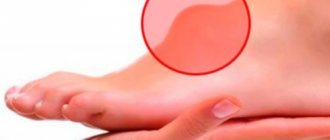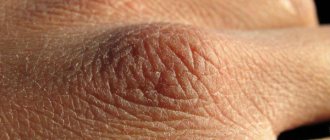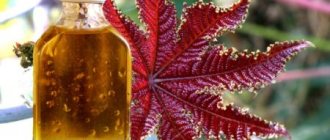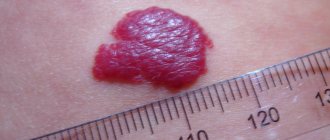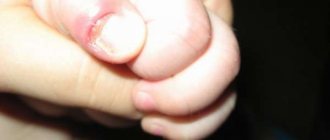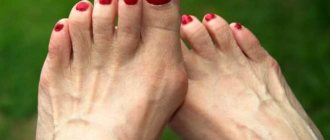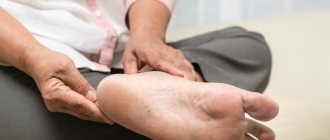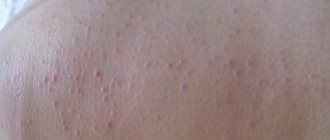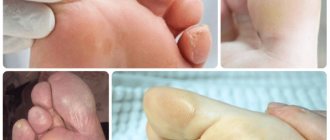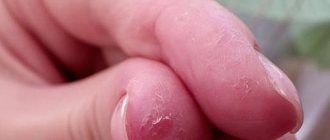Dry hands are caused by dermatological diseases, frequent temperature changes and low indoor humidity. Also, skin tightness is alarming when there is a lack of vitamins due to exposure to household chemicals. To cope with the problem, let's find out why the skin on our hands dries, how to remove the provoking factor and find a good moisturizer.
Dry hand skin is caused by dermatological diseases and temperature changes.
Causes of dry hand skin
Excessive dryness of the epidermis is caused by improper functioning of the sebaceous glands. Lack of sebum leads to tightness, flaking, and the formation of cracks on the fingertips and palms.
If the skin on your hands becomes thinner and begins to dry out in the fall, this is a sign of vitamin deficiency.
Disturbs the fat balance and reduces the ability to regenerate. Disadvantage:
- retinol;
- tocopherol;
- ascorbic acid;
- B vitamins;
- vitamin D.
Often the cause of dry hands is a lack of vitamins in the body.
Redness on the hands and face appears in winter from frost. During the cold season, the dermis rapidly loses moisture. Because of this, lipid balance is disrupted. Peeling and cracks appear on the body. The problem is aggravated by dry indoor air, strong wind outside, and temperature changes.
The reason that the skin becomes rough and cracks is a negative reaction to household chemicals. People who do not protect their hands with latex gloves when in contact with powders and bleaches are at risk.
Dry skin on the hands and knuckles, cracks between the fingers, around the nails, a rash that itches and bursts are symptoms of dermatological diseases:
- atopic and allergic dermatitis;
- eczema;
- neurodermatitis;
- psoriasis;
- fungus.
Fungus and eczema cause dry skin and flaking
Dermatitis, dermatoses and psoriasis are characterized by red spots, itching, and burning. A person scratches the affected areas until they bleed. Bacteria can penetrate into wounds, causing inflammation.
Infectious lesions provoke peeling, tightness, and the formation of dark and red spots on the arms and legs. At an advanced stage of the fungus, the nail plate dries out, turns black and comes out of the bed.
If dry skin turns yellow or becomes bluish-pale, this may indicate a malfunction of the internal organs:
- yellow spots on the hands are a sign of liver disease;
- cyanosis is a symptom of poor blood microcirculation and heart pathology;
- pale skin indicates iron deficiency anemia.
Blueness of the hands occurs due to poor blood circulation and problems with the heart
Rough palms and cracks on the fingertips are an indirect symptom:
- diabetes mellitus;
- hypothyroidism;
- dysfunction of the digestive tract;
- intoxication of the body;
- nervous overstrain.
Coarsening and severe dryness of the skin appear:
- from hard and hot water, which contains a lot of chlorine, magnesium and calcium salts;
- due to exposure to alkaline soaps and inappropriate cosmetics;
- while following strict diets;
- under the influence of drugs.
White plaque is one of the characteristic symptoms of dry skin.
Peeling skin can be a sign of serious dermatological diseases
The fat balance of the skin in men and women is disrupted by alcohol abuse, smoking, wounds and scratches. The characteristic symptoms of pathological dryness can be easily studied in the photos presented above.
Expert advice
Dermatologists recommend the following:
- Having adjusted your overall diet, use care products more often;
- It is more effective to use richer creams at any free time during the day;
- When using nourishing cream or ointment at night, you need to wear cotton gloves;
- monitor the air humidity in the room;
- wear gloves indoors before going outside;
- refuse scrubs that injure the hydrolipidic membrane.
Which doctor should I contact?
If dryness and redness do not stop under the influence of a moisturizer or regularly appear in one place, contact your local physician for an examination. He will write a referral to a dermatologist - a doctor who diagnoses and treats dermatological diseases.
To establish a diagnosis, consultation may be required:
- endocrinologist;
- gastroenterologist;
- toxicologist;
- allergist;
- cardiologist;
- neurologist.
Nutrition
Only foods rich in healthy fats can truly moisturize your skin from the inside. Which ones should you include in your diet?
- Many fruits are a natural source of vitamin C. This nutrient plays an important role in the process of growth and repair of new skin cells. It is worth diversifying your diet with oranges and pineapples.
- Almonds are a storehouse of vitamin E. It protects the skin from free radicals.
- Our skins are exposed to sunlight almost all year round. Foods rich in beta-carotene provide protection against their harmful effects:
- carrot;
- spinach;
- sweet potato.
- Eating foods high in omega-3 fats helps prevent dehydration at the cellular level. This:
- salmon;
- mackerel;
- sunflower seeds.
- Real dark chocolate contains a lot of selenium, zinc and potassium, which are beneficial for the skin.
You should avoid eating foods with a lot of salt: it dehydrates not only the skin, but the entire body. In case of excessive consumption, you need to increase the amount of fluid you drink.
Skin is an indicator of the health of the whole body, and the skin of the hands is also a criterion of well-grooming. That is why dryness and cracks should be eliminated as quickly as possible, after first understanding the reasons for their appearance.
Diagnostics
When examining a patient, the dermatologist conducts a survey, finding out how long the symptoms have been present and what could have been the impetus for the appearance of dry skin.
To diagnose diseases, the patient needs to undergo a general urine and blood test.
To find out the causes of the pathology, you need to pass:
- general urine analysis;
- general and biochemical blood test;
- coagulogram.
If allergic dermatitis is suspected, the patient undergoes allergy tests. To confirm the diagnosis of psoriasis, histology is performed, examining skin scrapings under a microscope.
If the patient has weeping ulcers on his hands, there are cracks under the nails, there is a rash, blisters, the skin is peeling or peeling, the dermatologist may suspect eczema or fungus. In this case, dermoscopy is prescribed - studying the rash under a magnifying glass.
It is mandatory to take smears from the damaged areas and do bacteriological culture to identify the microflora that provoked the inflammation.
How to choose a moisturizer?
The cosmetics industry offers many products for moisturizing the skin of the hands. In order not to get confused among this list, you should remember that only 2 types of ingredients can cope with the task of moisturizing.
- Emollients act as lubricants: The surface layer of the skin becomes soft and elastic. Therefore, the cream must contain at least one of the following components:
- glycerol;
- jojoba oil;
- lanolin;
- or squalene.
- Moisturizers attract water from the environment into the skin, which saves them from drying out. A quality cream must contain:
- hyaluronic acid;
- lactic acid;
- sorbitol;
- or urea.
What to do if the skin on your hands is dry?
When the fingertips are cracked and painful due to improperly selected cosmetics, exposure to cold or hard water, drug treatment is not required.
If the skin peels off and the fingertips crack, it is enough to establish nutrition and use basic sanitary rules
Comprehensive care will help eliminate dryness on the right and left hands.
- Diversify your diet by including dairy products, salads, herbs, and fruits. Eat boiled meat, sea fish, and fresh cabbage regularly. Enrich the menu with prunes, carrots, and legumes.
- To prevent your hands from drying out, wash them with warm water. Use hypoallergenic baby soaps, lotions and gels with a neutral pH. Gently pat your skin dry with a towel and lubricate with nourishing cream.
- When going outside in winter, be sure to wear woolen mittens on your hands.
- Wash dishes and clean the apartment using latex gloves.
Make softening baths and masks for cracks and dry hands 2-4 times a week. Buy a moisturizer with glycerin, plant extracts, and fruit acids for care.
Treatment with drugs
To treat vitamin deficiency, the doctor prescribes a diet rich in vitamins and microelements.
Complivit - vitamin complex
In severe cases, it may be necessary to take drugs that improve metabolic and redox processes:
- Alvitil;
- Rostwith;
- Complivit;
- Selmevit.
Selmevit - mineral and vitamin complex
If vitamin deficiency is diagnosed in a child, Vitrum Junior, Pikovit, Multi-Tabs are prescribed.
Hormonal and non-hormonal external agents are in demand for the treatment of skin diseases. Ointments based on glucocorticosteroids quickly eliminate unpleasant symptoms, pathogenic flora, heal injuries, but have many contraindications and side effects - they are used only as prescribed by a doctor.
| Group for the treatment of dermatitis | Name of drugs | Action |
| Non-hormonal ointments and creams | Bepanten, Videstim, Keratolan. | Moisturizes the skin, softens it, removes redness and flaking. |
| Hormonal ointments | Hydrocortisone, Dexamethosone, Triamcinolone | Eliminate inflammation, heal wounds, relieve allergic manifestations. |
| Antibacterial external agents | Tetracycline, Erythromycin ointment, Levomekol. | Eliminate bacterial infection, heal cracks and ulcers. |
| Fungus treatment group | ||
| Antiseptics | Zinc, sulfur, salicylic ointment. | Remove skin itching, redness, promote rapid regeneration. |
| Antimycotics | Clotrimazole, Nizoral, Exoderil. | They relieve itching and burning, restore the integrity of the skin, and destroy fungus. |
| Broad spectrum products | Lamisil, Mycospor, Triderm. | Suitable for the treatment of mycosis on the hands and feet. They have antimicrobial and anti-inflammatory properties. |
| Group for the treatment of psoriasis | ||
| Hormonal ointments | Beloderm, Advantan, Flucinar. | Promote the healing of psoriatic plaques. |
| Non-hormonal ointments | Ichthyol, naphthalene ointment. Sulfur-salicylic ointment. | Relieves inflammation and exfoliates dead cells. |
| Eczema Treatment Group | ||
| Corticosteroids | Ointments Prednisolone, Dermovate; Lorinden A | Heal burst blisters, remove redness and itching. |
| Non-hormonal medications | Eplan, Sin-cap, Losterin. | Get rid of rashes on the hands, stop dryness and the formation of cracks. |
How to get rid of the problem using folk remedies?
You can cure cracks and dryness using folk methods. If the problem arose due to dermatological diseases, be sure to combine the use of prescriptions with drug therapy.
Hand masks
- In a ceramic container, combine 1 tsp. natural honey and glycerin. Add 1 tbsp. l. water and stir. Add 1 tsp. oatmeal Spread the product on the skin in a thin layer, put on cloth gloves. After 30 minutes, wash your hands with warm water and apply cream.
- Beat chicken yolk with 1 tbsp. l. honey. Pour in 2 tbsp. l. olive oil, continuing to beat the mixture. Thickly smear the lush mixture onto rough palms, fingers and hands. Wash off the mask after 20 minutes with warm water.
- Mash half a banana with a fork. Add 1 tbsp. l. honey and soft butter. Stir. Rub the creamy mixture into the skin of your hands and leave for 30 minutes. Clean the product with water.
Use hand baths to care for your skin and prevent flaking and dryness.
Hand baths
- Mix linden flowers and eucalyptus in equal proportions. Select 2 tbsp. l. collection, pour 500 ml of boiling water and leave for 15 minutes. Strain the liquid into a wide bowl, immerse your palms and soak in the bath for 20 minutes.
- For the procedure, use oak bark, chamomile, peppermint, calendula, and bird cherry fruits. Mix the raw materials in the same ratio. Take 2 tbsp. l. pour 500 ml of water, bring to a boil, boil for 5 minutes and turn off. After 15 minutes, filter the broth and use it for a bath.
- Squeeze a glass of juice from the sauerkraut into a glass bowl. Wet your hands in the product and leave for 15 minutes. Rinse the skin with water and lubricate with rich cream.
- Heat 200 ml of olive oil in a water bath to 37 degrees. Pour into a deep plate and dip your hands into the mixture. After 20 minutes, take it out and blot it with a dry cloth.
- Peel 3-4 potato tubers. Cut into pieces, add 500 ml of water and cook until tender. Drain the liquid into a separate container. Place dry skin on your hands in a warm broth for 30 minutes.
To keep your skin healthy, your diet must be correct.
The secret is simple: to restore softness and tenderness to your hands, minimize the impact of negative factors, provide your skin with complete care, balance your diet and give up bad habits. If this does not bring success, be sure to consult a doctor to find out the causes of painful dryness.
Find out more on the topic: Skin, nails, hair
Treatment of the pathological condition
The first and surest step to getting rid of an uncomfortable condition is to see a doctor. It is optimal to visit a therapist who, if necessary, will refer you to a dermatologist, endocrinologist or gastroenterologist. The exact cause of the cracks will become known after a series of tests (blood tests, scraping of epidermal cells from the affected area, etc.). Based on the diagnostic results, the doctor decides on a plan on how to treat the cracks. As a rule, local drugs with restorative properties, vitamin and immunostimulating complexes are prescribed. For fungal infections, antifungal ointments and creams, as well as antibiotics, are used. Endocrine disorders are eliminated through hormonal therapy.
Soda and salt baths and compresses based on pharmaceutical herbs (chamomile, calendula) are indicated as additional therapeutic measures. Such procedures can be carried out at home. In addition, it is recommended to regularly lubricate the skin with emollient creams and Vaseline.
Effective salon treatments
A beauty salon may offer you paraffin therapy. Cosmetic paraffin, which contains aromatic oils, is melted in a special bath. When you put your hands in the bath, paraffin creates a waterproof layer on the surface of the epidermis, and vegetable oils moisturize the dermis and saturate it with useful components. The effect is noticeable after the first procedure: hands become soft, skin looks smooth and elastic, small wounds heal.
Paraffin therapy should not be performed on hands with cracks, because the contact of hot paraffin with the wound will cause severe pain. In this case, it makes sense to purchase paraffin in the form of a cream and regularly use it to moisturize dry skin on your hands.
To treat serious diseases, the symptoms of which may be cracked and dry skin of the hands, a dermatologist can prescribe more effective salon procedures: electrophoresis, laser and UHF therapy.
